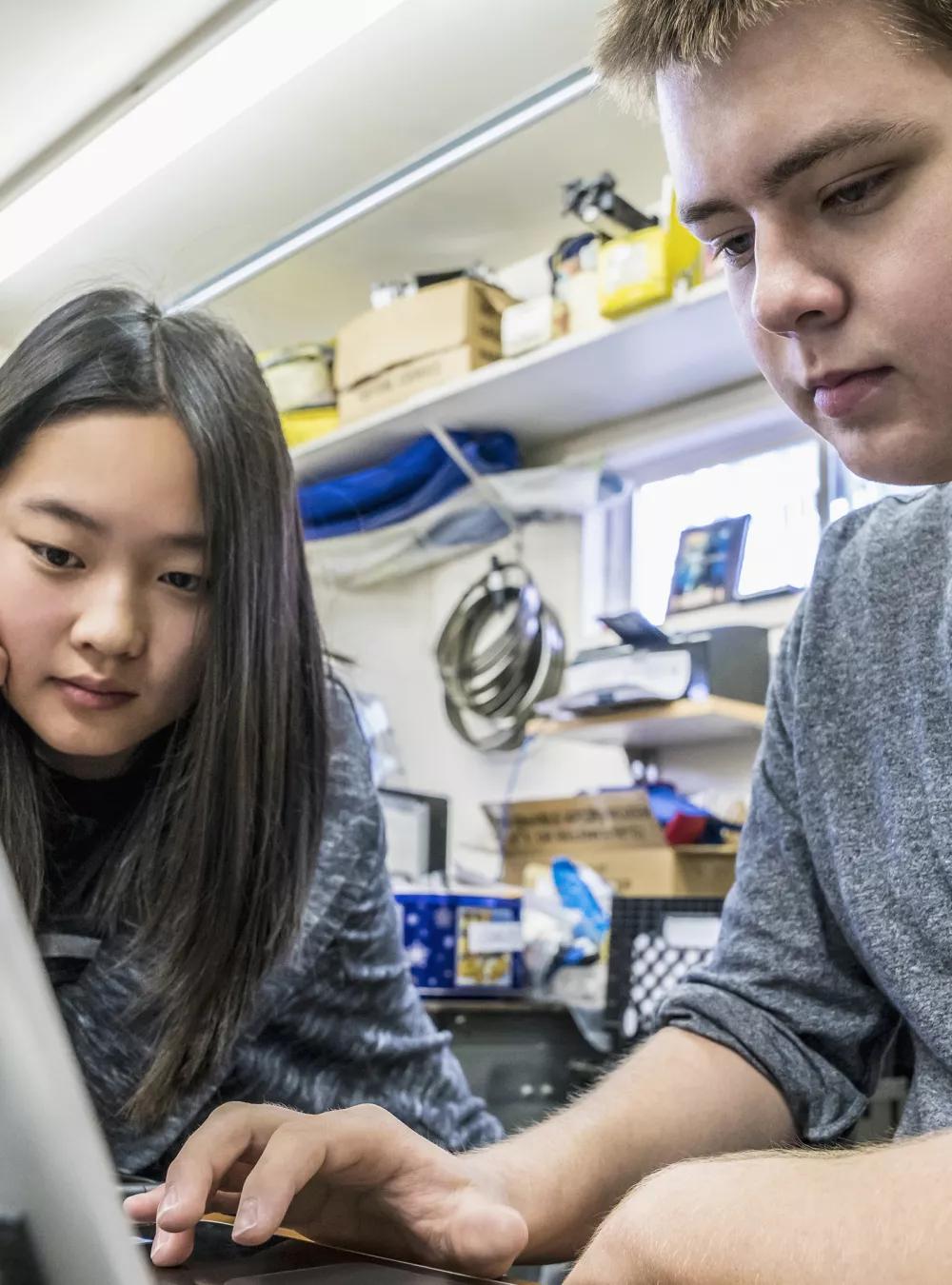A new MITRE class took 28 high schoolers from zero knowledge of quantum to a strong interest in pursuing quantum careers. With estimated industry growth to $1 trillion by 2035, quantum skills will be critical to advances in healthcare, cyber, and more.

Growing a Quantum-Capable Workforce: Will We Be Ready?
Quantum computing, with its lightning-fast computations and strange qubits, may seem more daunting than rocket science.
But that didn’t put off a group of high school students participating in a MITRE-led quantum computing class in July. They met its challenges head on.
“The course built knowledge in a field I would never have attempted on my own,” says senior Ethan Stephanis of Tampa, Florida. “It gave me confidence to tackle something as scary as quantum algorithms. After taking this class, I can see myself contributing to quantum science in the future.”
It’s a field expected to exponentially affect how people live and work in the future.
The quantum computers in development today will fundamentally process data far differently than conventional ones. They’re expected to do specific, complex calculations much, much faster than the most advanced digital computers.
The capability brings huge implications for things like finance, manufacturing, cybersecurity, and more. Through these and other applications, quantum shows promise to become a $1 trillion industry by 2035.
That’s why both the public and private sectors are busy preparing for the field’s complex challenges. These include security, identifying use cases, and building responsible practices for its application.
And the big question: If quantum’s full potential is indeed realized, will the workforce be ready to meet its demands?
Getting from Zero to 360
Strong competition for quantum-capable talent and minimal availability of quantum computing education below the graduate level suggest the emergence of a skills gap. To help get ahead of this, we partnered with MIT’s Beaver Works Center.
MITRE engineers and co-instructors Joe Clapis and Richard Preston worked over a six-month period to transform an existing two-day internal MITRE class into an intensive, four-week MIT summer offering.
The class addresses a shortfall in conventional quantum training. Typically, such training assumes a strong background in quantum physics, essentially teaching software engineering to a limited pool of quantum engineers.
Our curriculum aims to develop a broader quantum-capable talent pool. It’s for people well-versed in traditional software engineering who want to become quantum software engineers.
But how well-versed could high school students be?
A diverse group of 100+ students nationwide underwent a rigorous application process. Selection hinged on completion of intense prerequisites for software engineering fundamentals. While the 28 students chosen for the class met those requirements, they came in with practically zero knowledge of quantum engineering.
“I was blown away by what the students accomplished in just four weeks,” Preston says. “They went from no quantum skills to doing things you’d expect from a practicing quantum software engineer.”
How did that transformation unfold?
For the first half of the class, Clapis and Preston guided students in learning how quantum computing works and what quantum algorithms are. They also led hands-on exercises in building real quantum code.
The last two weeks, students worked in teams to implement a quantum algorithm and assess its application for solving real-world problems. Finally, the teams presented their research results.
“This class was exceptional,” says senior Kyle Johnston of Wappingers Falls, New York. “I loved having access to an emerging field like quantum. I also appreciated how the course pulled a diverse group of students with unique perspectives to work together on really complex problems.”
I was blown away by what the students accomplished in just four weeks. They went from no quantum skills to doing things you’d expect from a practicing quantum software engineer.
Quantum Today: No Longer a Curiosity
When it comes to the fast-growing field of quantum, MITRE’s unique vantage point working across government, academia, and industry allows us to offer deep, interdisciplinary expertise without any commercial conflicts of interest. The quantum software development class evolved from our independent R&D program.
“Industry, government, and academia are starting to invest heavily in quantum—it’s no longer just a curiosity,” Clapis says. “They’re laying the groundwork for quantum computers that can solve some of today’s real problems much more effectively, and we expect the scope of those problems will only grow.”
With opportunities to expand the training to other audiences, Clapis and Preston designed the curriculum to be easily repurposed. For example, course materials informed the quantum workshop Preston presented in September at Tufts University.
Beyond enhanced training and education, preparing for what lies ahead requires careful planning and vision.
“Our independent R&D program looks into the future to determine which emerging technologies could help the government better carry out its missions,” says MITRE’s Jay Schnitzer, senior vice president, chief medical and technology officer.
“We began researching the potential of quantum information science more than 10 years ago so we’d be ready for this moment, when we’re on the verge of breakthrough capabilities. We’ll continue investing in many aspects of quantum and the talent needed to drive it forward.”